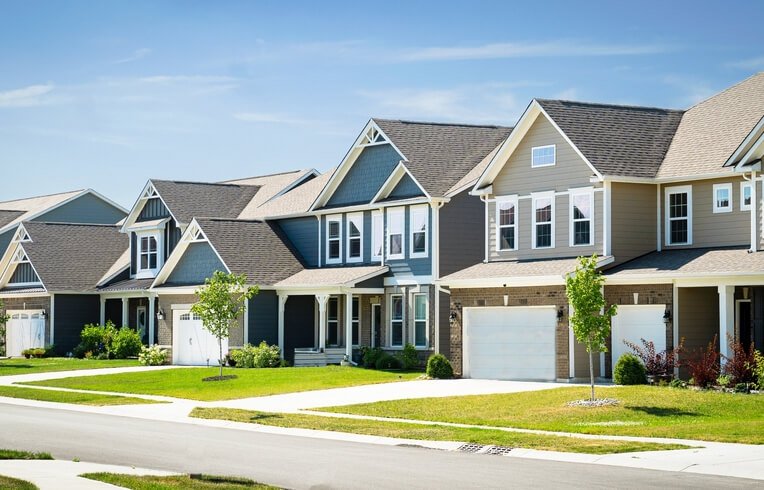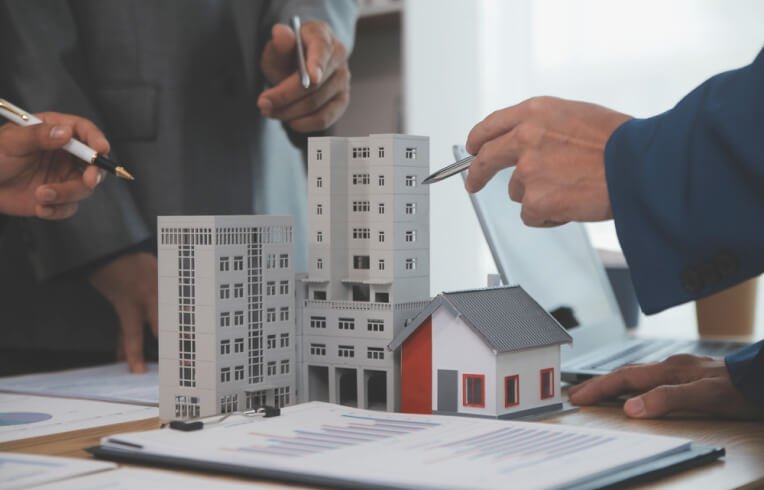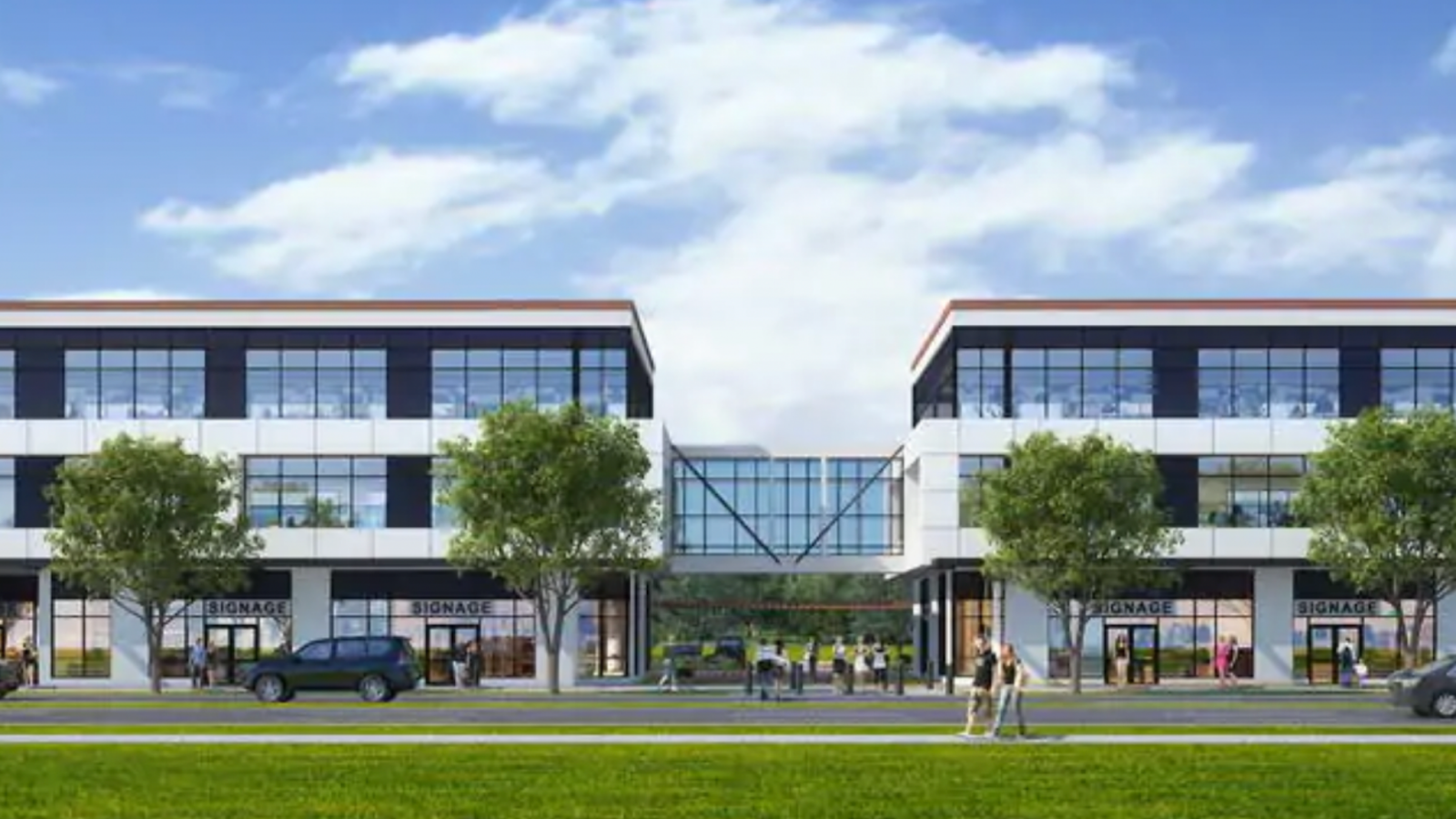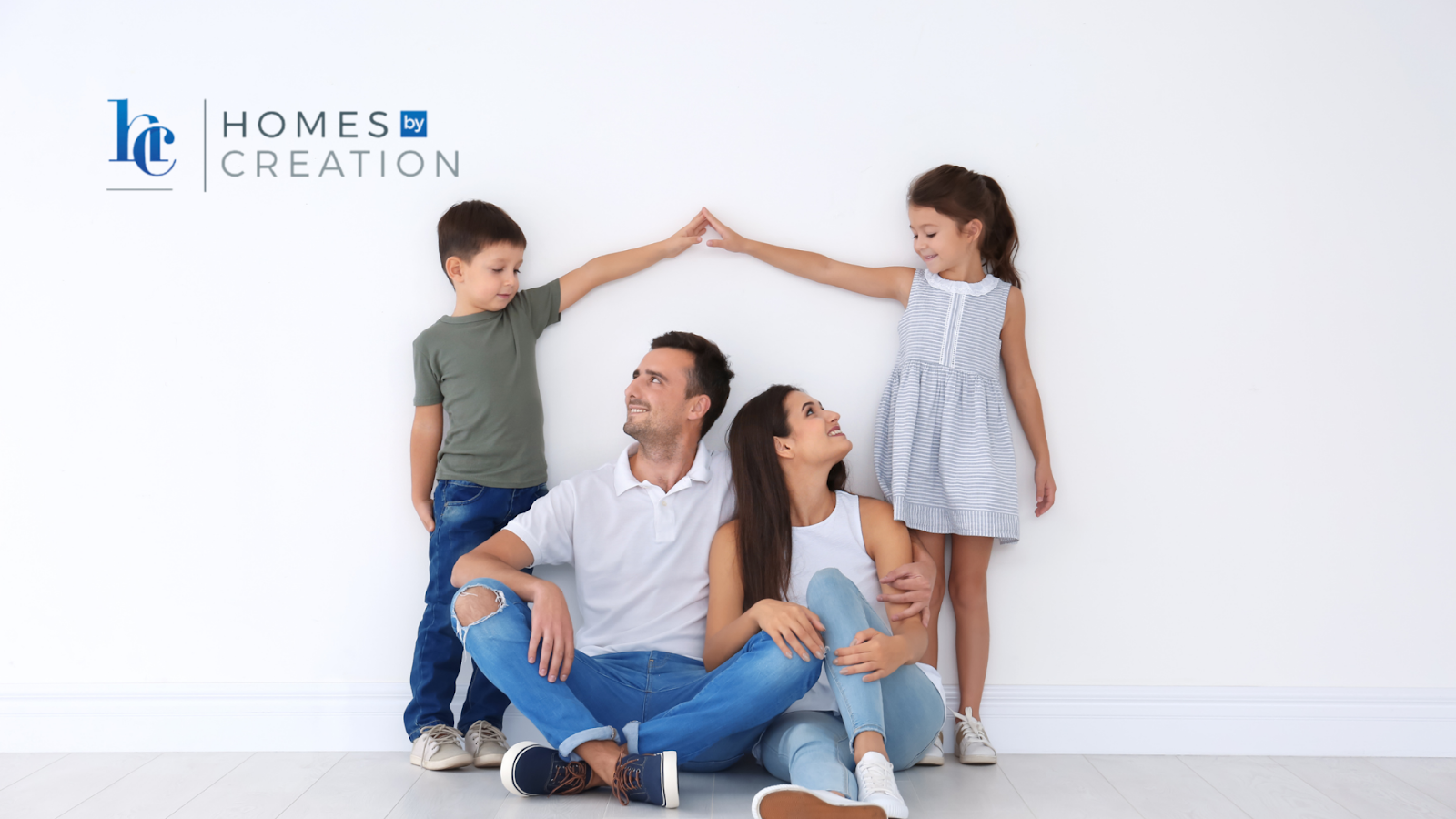Homeowners in Alberta are embracing 2025 design trends that combine sustainability, comfort, and modern style. Biophilic living, eco-friendly materials, and smart technology upgrades are transforming homes into healthier, more efficient spaces. From earthy tones and textured walls to multifunctional layouts and statement lighting, these trends offer timeless appeal and long-term value, helping homeowners create stylish, functional environments that support everyday living and future needs.
The idea of chasing home design trends can feel overwhelming for homeowners in Alberta and across Canada. After all, the whole point of owning a home is to enjoy some sense of permanence. However, the fleeting nature of interior and exterior home design trends suggests the opposite.
While it’s easy to swap your last year’s pair of jeans inspired by what’s trending on the runway, refreshing your home design often takes time, energy, and a lot of money. Who wants to replace a couch, dining table, or kitchen finish every year when they’re meant to last decades without looking outdated?
Home design styles come and go, albeit slowly. Do you remember when Chintz was all the rage back in the 1960s? Then came minimalism interior décor in the 1990s, which later gave way to the maximalist resurgence. Now that we’re in 2025, homeowners are asking: which home design can feel fresh today while still offering timeless appeal tomorrow?
Year of Intentional and Functional Home Design
Alberta homeowners are making exterior and interior home design choices that reflect intentional design and everyday functionality. Factors such as rising costs of living and a growing focus on long-term value are shaping how homeowners design and decorate their living spaces in 2025.
Another factor that is shaping homeowners’ design choices is the shift toward eco-friendly practices. Instead of surface upgrades, homeowners are choosing durable and sustainable materials such as reclaimed wood, recycled metal, and natural stone. These materials create a timeless appeal and have a limited environmental impact.
Studies show that an average home with eco-friendly features such as double-glazed windows, solar panels, and smart lights can lower energy bills by about 30%.
At the same time, technology is playing a bigger role in how modern homes are designed. For instance, the Canadian smart home technology market is expected to reach USD 6.77 billion in 2030, with more than 31% of households already using devices like smart lighting and smart security systems. These upgrades enhance convenience and create safer, more efficient homes.
There’s also a significant shift toward blending indoor and outdoor spaces. Alberta’s reputation as one of Canada’s sunniest provinces makes it ideal for designing patios, outdoor living areas, and even outdoor kitchens that extend usable square footage.
Most modern homes have features like heated flooring,lighting, and weatherproof finishes. These spaces maintain comfort year-round and prove that modern elements can transform homes even in sunny regions like Alberta.
Home Design Trends for 2025
Perhaps you intend to renovate a decades-old bungalow or refresh a new home. Here are home design trends that combine style with functionality to create multifunctional spaces.
1. Biophilic Home Design
In a way, Albertans are seeking to create homes that feel like “a living or breathing ecosystem.” Biophilic design is the practice of bringing nature into your indoor space. It uses design elements like natural light, living walls, indoor plants, and natural materials to create a calm, healthy living space. The biophilic concept is simple: people feel better when they are connected to nature.
This approach is gaining momentum in Alberta, where sunlight is abundant. For instance, Calgary sees about 333 days of sunshine each year, while Edmonton also ranks among Canada’s sunniest cities. That’s why property owners are using bigger windows, skylights, and glass doors to maximize daylight. These changes make rooms brighter, reduce energy use, and create an inviting atmosphere even during long winters.
Design professionals expect this demand to keep growing. The NKBA’s 2025 Kitchen Trends report found that 67% of experts expect larger windows and stronger connections for outdoor spaces in the next few years. Here’s how Albertans are embracing this design trend of bringing nature into their homes.
- Adding indoor plants and creating living walls to improve air quality
- Using wood, stone, and other natural materials for warmth and visual interest
- Maximizing natural light using skylights and large windows
- Installing lighting fixtures inspired by nature to extend the calming effect into evenings
- Creating outdoor living areas that blend smoothly with indoor spaces
This home design approach improves indoor air quality, reduces stress, and improves your comfort all year round. Even in Alberta’s climate, biophilia works and is set to remain a leading trend in 2025 and beyond. It’s an emerging design that will continue to create homes that support both comfort and mental well-being.
2. Sustainable and Eco-Friendly Materials
Residential property design is becoming more eco-conscious, and rightly so. According to a recent Green Building Canada report, using reclaimed or locally sourced materials can reduce your renovation’s carbonfootprint by as much as 30%. Sustainable materials like bamboo, recycled metals, and reclaimed wood are increasingly popular because they’re eco-friendly.
Why does this matter in Alberta?
In May 2024, Alberta adopted the 2023 Alberta Building Code (Tier 1 energy efficiency) as the minimum standard for housing. This change nudges builders toward better-performing envelopes and eco-friendly material choices.
Beyond energy rules, the push for lower-carbon and durable finishes is growing. For instance, mass timber, including engineered wood such as CLT (cross-laminated timber) and glulam, has a notably lower embodied carbon footprint than steel or concrete. That’s why, according to Reuters, this material is gaining credibility for its strength, flexibility, and sustainability.
For example, a Quebec case study found that an all-wood academic building delivered a 40% reduction in embodied energy compared to steel and concrete options.
Beyond wood, Canada is ramping up metal recycling capacity. For instance, companies like Cyclic Materials and Glencore are partnering to process recycled copper, over 10,000 metric tons, at Quebec’s Horne Smelter. This will reduce mining and carbon emissions significantly.
At the same time, copper makers like Nexans are increasing recycled content,from 14% to 20%, in their rods to support cleaner infrastructure development.
Benefits of Using Sustainable Materials in Home Design
Using eco-friendly materials in home renovations, remodels, and general design reduces waste. It also supports the use of reclaimed wood, recycled metal, natural materials, and raw materials. These materials help homeowners connect to the timeless appeal of their home. Here’s a simplified analysis of how different materials can make your home more eco-friendly.
| Sustainable Material | Practical Use | Key Benefit |
| Mass timber (CLT and glulam) | Structural panels and featured beams | Lower embodied energy and carbon emissions |
| Reclaimed wood & natural stone | Floors and accent walls | Better visual texture and durability |
| Recycled metals (like copper) | Fixtures and hardware | Low-carbon sourcing and recycling |
3. Smart Technology Integration
Smart home technology has evolved from a novelty to a practical necessity, especially in Alberta. Cold winters and long commutes make this technology invaluable to manage heating, lighting, and security while away. Remote control and smart automation now genuinely enhance convenience and help homeowners enjoy a streamlined and connected experience.
Deloitte’s research shows that more property owners view smart devices, such as security cameras,smart locks, and smart lighting, as indispensable in their daily lives. They cite improvements in quality of life and peace of mind as major benefits.
In addition, the Consumer Technology Association’s recent study emphasizes the growing smart home integration across Canada. There has been an increasing ownership of smart device categories such as smart speakers, thermostats, and alarm systems.
Beyond the current smart home integration trend, the smart home market in Canada is forecasted to nearly triple by 2028 in categories like comfort, control, lighting, and energy systems. For instance, the number of Canadians using smart comfort and lighting devices is expected to grow from 2.6 million to 7.5 million in that period.
Homeowners are now making thoughtful design choices to improve access control and convenience. For instance, you can integrate wireless smart lighting, hidden smart speakers, and sleek, voice-controlled systems to ensure your contemporary décor remains clean and uncluttered.
Also, you can add devices such as smart thermostats and smart security systems to your home’s design while ensuring better control and a sleek appearance.
4. Outdoor-Indoor Integrated Spaces
When scrolling through architectural design posts and Pinterest pictures, you’re likely to notice the trend of tying indoor and outdoor living spaces. Homeowners in Alberta and across Canada are extending their living spaces beyond four walls. There’s also a growing focus on unified and multifunctional spaces.
Key Elements of Outdoor-Indoor Integrated Spaces
Here’s how homeowners in Alberta are creating integrated indoor-outdoor spaces that blend style and functionality.
- Open floor plans that minimize walls for easy movement and unobstructed views
- Large glass windows and doors for ample natural light and panoramic views
- Consistent flooring (similar materials) for outdoor and indoor areas for visual continuity
- Outdoor living spaces are carefully designed with seating options for entertainment
- Incorporating natural elements, such as natural materials and plants, to connect outdoor and indoor spaces
Today’s homeowners can design outdoor kitchens and outdoor areas that work year-round while maintaining visual harmony.
5. Earthy Tones and Rich Color Palletes
Earthy tones are a wonderful design trend that adds warmth and coziness to modern homes. These colors are inspired by nature and include deep browns, olive green, and shades of terracotta. Each hue has a unique charm and can transform your home into a welcoming living space.
In Alberta, earth tones add natural resonance to modern homes. Think of the deep green hues that echo the forests at the base of the Rockies and warm browns that reflect the local woodlands. Indeed, these color options are rooted in the region’s palette.
The NKBA 2025 Kitchen Trends Report indicates that earth tones, particularly those common in the 1970s, are making a strong comeback. In the survey, 52% of interior design professionals expect these hues to be a go-to for homeowners in the next three years. The report shows that layered textures, wood warmth, and olive green hues are likely to dominate home design for some time.
6. Curved Furniture, Softened Lines, and Rounded Shapes
Curved furniture and rounded shapes have made a significant comeback in the home design sector over the past few years. Open floor plans often emphasize sharp angles and straight (or clean) lines. Adding curved furniture offers a more inviting and immersive space that can transform your home into a cozy living area. Here are the benefits of curved or rounded furniture and softened lines:
- Curved spaces are designed to offer better support and seating experience.
- Unlike straight lines, gentle contours create a calm and welcoming atmosphere. This could make your home feel alive and dynamic.
- Rounded shapes mimic nature and promote tranquillity in your home.
- Curved pieces of furniture complement different design styles and can blend into your home decor.
Alberta homeowners can combine clean lines with curved pieces of furniture to create visual interest that feels both modern and timeless.
7. Multi-Functional Spaces for Real Life
An increasing number of Canadians are working from home. That means, they need multifunctional spaces, which have become an essential part of home design and reflect how families actually live. Many households now need rooms that flex between work, study, play, and hosting guests. That’s why interior designers are rethinking layouts that maximize efficiency without compromising comfort.
For example, long winters in Alberta make it more important to create immersive spaces where your daily life can unfold in one adaptable environment. In addition, the NKBA 2025 Design Trends report shows that most homeowners now prioritize personalization, clutter reduction, and multifunctional planning. This home design trend is shaping how homeowners use their homes
Similarly, Houzz’s 2025 outlook shows a growing demand for expressive home interiors that combine practical function with emotional comfort. In practice, this means rethinking dens, spare rooms, and basements as areas that can be personalized and used in different ways.
For instance, a single living space can serve as your work-from-home setup by day, a guest area with convertible sofas by night, and a play zone on weekends. Interior designers use zoning strategies, like area plush rugs and lighting, to ensure functionality while keeping your home’s design flow cohesive.
Built-in storage, rolling carts, and adaptable furniture can further support this unique “more is more approach,” where every square foot of your dream home is utilized.
8. Statement Lighting and Smart Controls
In Alberta homes, statement lighting has shifted from being an accent to becoming one of the key aspects of interior design. Oversized pendants, sculptural chandeliers, and bold floor lamps now play a key role in defining zones within open-plan layouts.
This type of lighting is increasingly popular in larger living areas. Here, lighting fixtures can add function and visual interest to separate dining, working, and relaxation areas without the need for walls.
Industry data reflects this trend. For instance, the NKBA 2025 Design Trends report identifies lighting as a growing priority, tied to wellness and biophilic goals that support mood and comfort. Similarly, Houzz’s 2025 coverage highlights a surge in sculptural designs, organic forms, and clean lines that create a sleek appearance while still serving practical needs.
Beyond aesthetics, smart lighting systems are shaping how Alberta households manage their energy usage and well-being. For instance, automated schedules help you set your lighting system to mimic natural daylight. This eases the impact of long winter nights, while dimmers and app-based controls ensure convenience. The result is a balance of expressive space design and everyday function.
9. Art Deco is Re-emerging in Alberta Properties
The enduring appeal of Art Deco lies in its ability to combine history with modern design. This makes a unique style that consistently returns to the modern home design industry. It was common in the 1920s and reached global popularity in the 1930s.
Art Deco represents glamour, progress, and modernity. Its combination of bold geometry, luxe finishes, and dramatic contrasts made it a bold cultural statement during the 1920s. Those same tones and qualities continue to inspire interior designers today.
One of the hallmarks of Art Deco is its reliance on luxurious materials. Surfaces in marble, ivory, lacquer, and rare woods were often paired with chrome, brass, and stainless steel to reflect the industrial optimism of the early 20th century. These finishes offered a sleek appearance while emphasizing wealth and sophistication.
Rich Colors
Color played an equally important role. Deep emerald greens, rich reds, and royal blues combined with black or metallic accents to create striking interiors. Gold and silver highlights amplified the sense of luxury and grandeur that mirrored the exuberance of the Jazz Age.
Perhaps the most recognizable feature of Art Deco is its geometric features. Designs often employed zigzags, chevrons, and sunburst motifs, which were strongly influenced by Cubism and modernist art movements.
These patterns extended across furniture, textiles, and even city skylines, as seen in iconic buildings like the Chrysler Building in New York. The timeless blend of elegance and bold design ensures Art Deco’s continued influence in contemporary interiors.
In Alberta, Art Deco influences are re-emerging in luxury condo interiors and custom home builds. Interior designers are using bold geometric lighting, brass finishes, and jewel-toned accents to add visual interest to modern spaces. This home design trend combines historic opulence with today’s demand for functionality. This gives homeowners a way to celebrate timeless style while keeping interiors fresh and contemporary.
10. Textured Walls
Textured walls can transform your space into a layered, inviting environment. You can choose wood panels, woven textures, natural textures, or accent walls to create dimensional surfaces that complement your contemporary decor by adding tactile richness and aesthetic appeal. Here are different ways to create textured walls.
Textured Paint and Wallpapers
Textured paint introduces subtle and tactile layers through fine additives to create walls that feel as intriguing as they look. Many homeowners turn to textured wallpapers, like grass-cloth, fabric-inspired patterns, or embossed metallic,to infuse walls with sensory appeal and layered complexity.
Similarly, paneling options like wooden slats, wainscoting, or three-dimensional MDF panels serve as sculptural statement pieces that reinforce visual impact. These techniques are decorative, soften echoes, and improve acoustics. Thus, you can use textured walls to ensure multifunctional rooms feel more comfortable and sound-balanced.
Textured walls can also hide minor imperfections. This is a practical hack, particularly in high-traffic areas or older homes where walls may not be perfectly smooth.
In Alberta homes, mixing different materials, such as combining wood panels, grass-textured wallpaper, and stone-like texture paint, can add tactile interest and aesthetic appeal. A single accent wall with layered textures can anchor your room to create a compelling focal point while blending contemporary decor and comfort.
Final Thought
Staying up-to-date with the top home design trends in Alberta can significantly influence your choices related to home renovations, remodeling projects, and interior décor. Consider trends that combine functionality, sustainability, and style to improve your living experience and increase your home’s long-term value.
FAQs
What home design trends are most popular in Alberta in 2025?
The top home design trends for 2025 include smart home integration, biophilic design, emphasis on energy efficiency, combining textures, eco-friendly or organic materials, and incorporating elements like fire pits or outdoor kitchens to extend your living area.
Is biophilic design recommended in Alberta’s climate?
Yes. Biophilic home design improves wellness throughout the year by maximizing natural light, incorporating indoor plants, and other design options that are ideal for Alberta’s winter weather, known for limited natural light.
What colors are trending in Alberta’s modern homes in 2025?
Most homeowners prefer a vibrant mix of bold colors, while others choose soft greens, terracotta tones, warm neutrals, and taupes. Most color pallets are inspired by Alberta’s natural landscape and are ideal for cozy winters as well as bright summers.
Are open floor layouts popular in Alberta?
Yes. However, this design trend has a somewhat unique twist in 2025. Most residential property owners choose to maintain an open floor layout while using lighting, partitions, and rugs to create carefully defined zones. This can add structure to your home without losing natural light or valuable space.
Why is Art Deco still popular in modern design?
Art Deco remains popular because of its timeless mix of luxury and bold geometry. It uses rich colors, metallic accents, and elegant materials to stay relevant in both classic and contemporary spaces. Designers often reinterpret the core concept of Art Deco to suit modern lifestyles.





